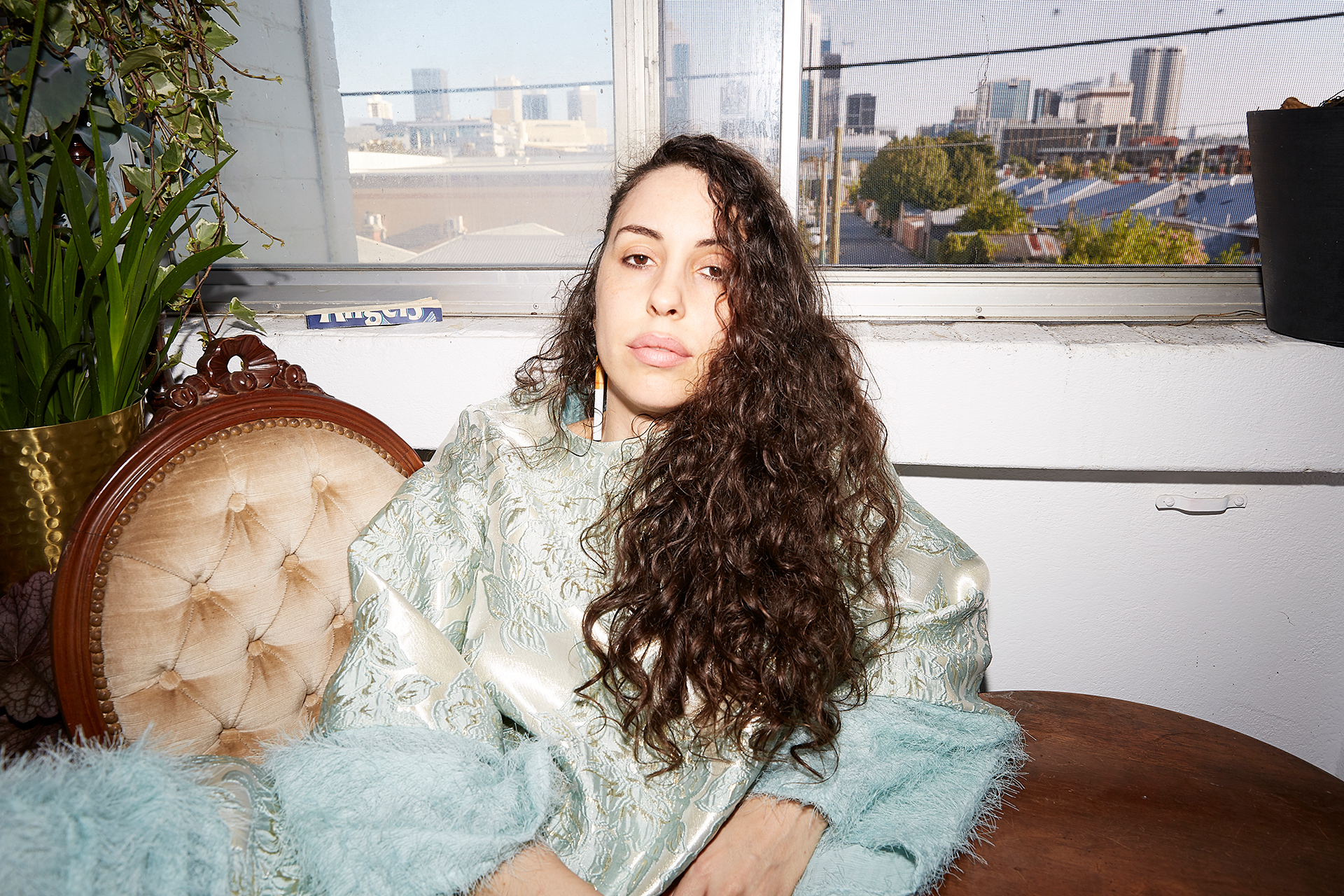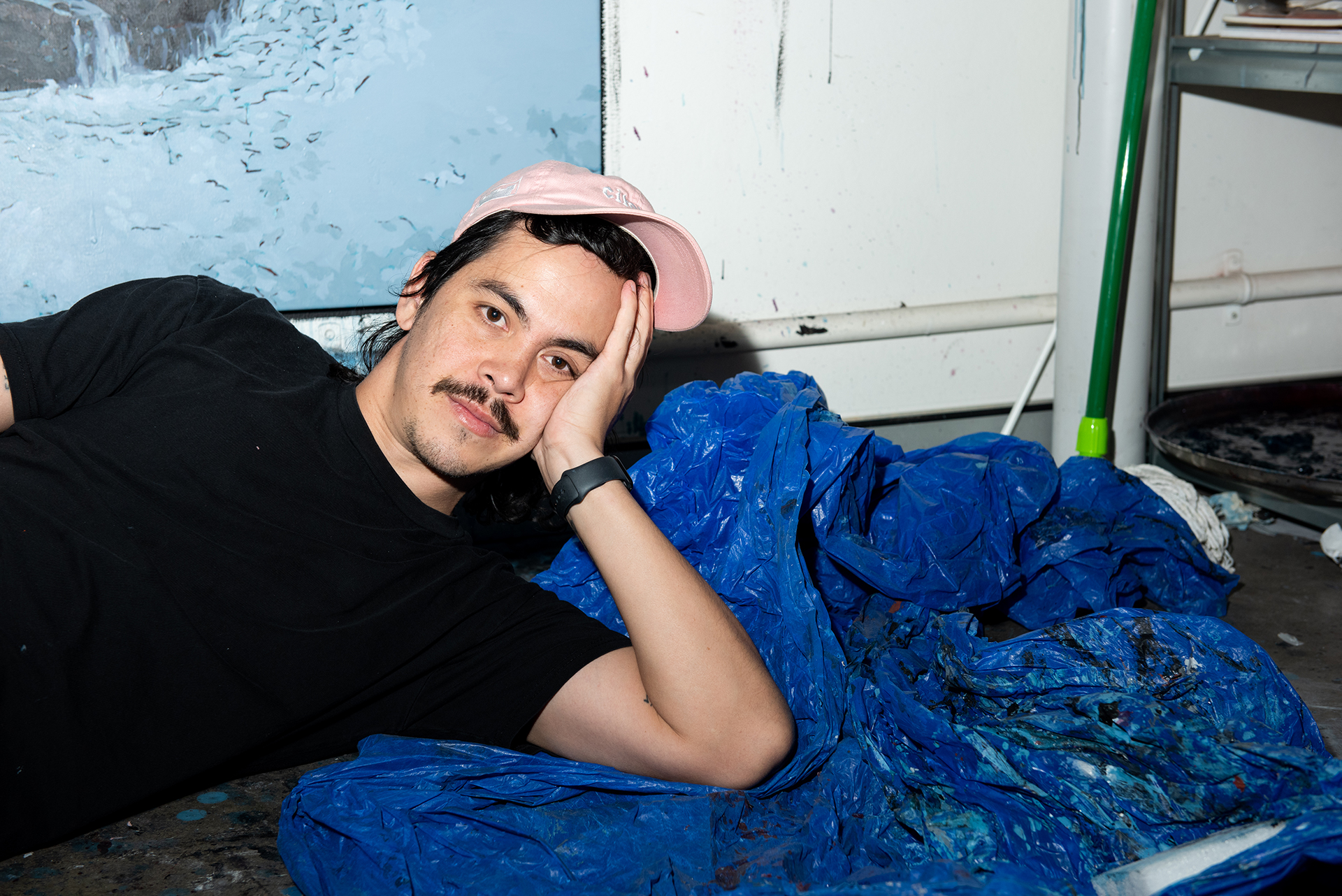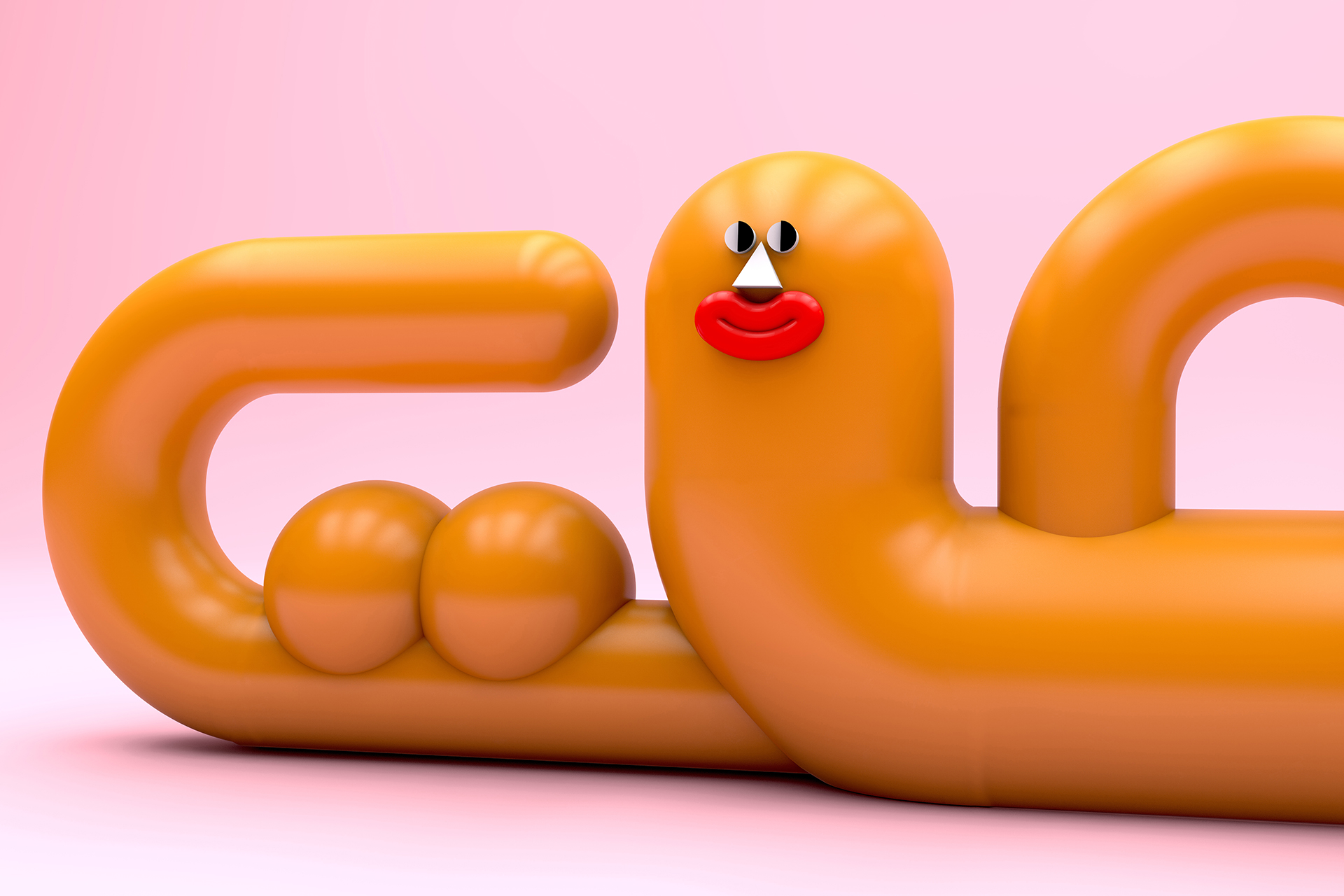Tyrown Waigana’s expressionistic mural invites abstract character into AGWA’s revamped foyer
The commission is the first for a new rotating mural wall that welcomes visitors to AGWA.
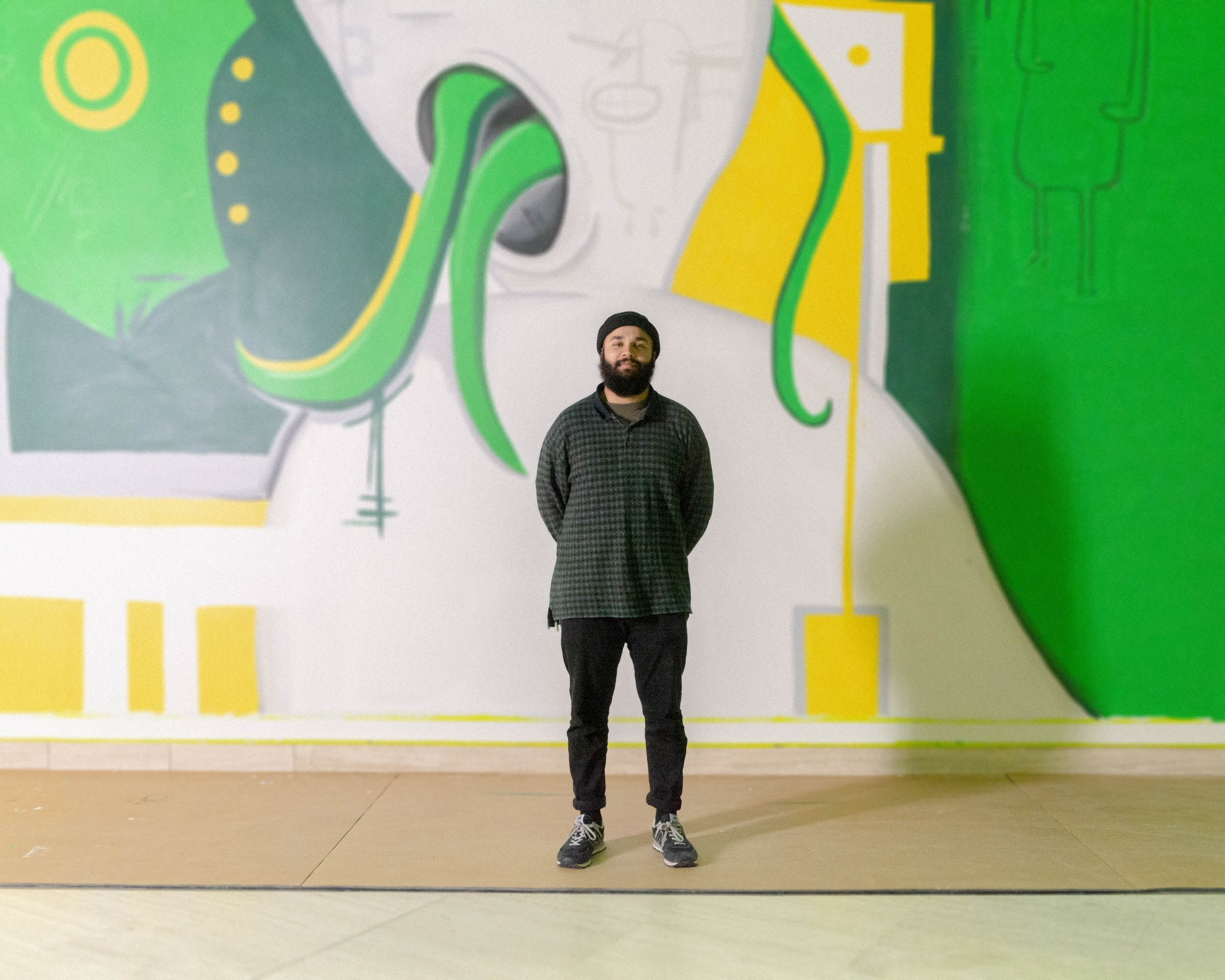
Tyrown Waigana Overgrown 2021 (detail). Acrylic paint, 500 x 680 cm. Purchased through the Art Gallery of Western Australia Foundation 2021, with support from The Next Collective and Minderoo Foundation. Photo by Tim Palman.
“THERE WAS ALWAYS SOMETHING creative going on at home when I was growing up, everyone in my family kind of dabbled in art,” Tyrown Waigana recalls. Such exposure to loquacious creativity animates the young multidisciplinary artist and graphic designer’s practice, which ranges from illustration, painting and sculpture, to animation and graphic design.
Waigana is a Wardandi Noongar and Ait Koedhal artist. He seems deeply reflective as we chat about his new mural in progress for AGWA, mulling over ideas. He speaks in an open but considered way. He’s an observer whose art is an accumulation of his interpretations of the world around him and the lives of those who inhabit it.
Of the animated series Mostly Brown People, which he made for Fremantle Arts Centre’s 2020 Revealed exhibition, he says: “My animation work is short comedy skits [that] try to provide insights into how people around me behave or at least how I observe them.”
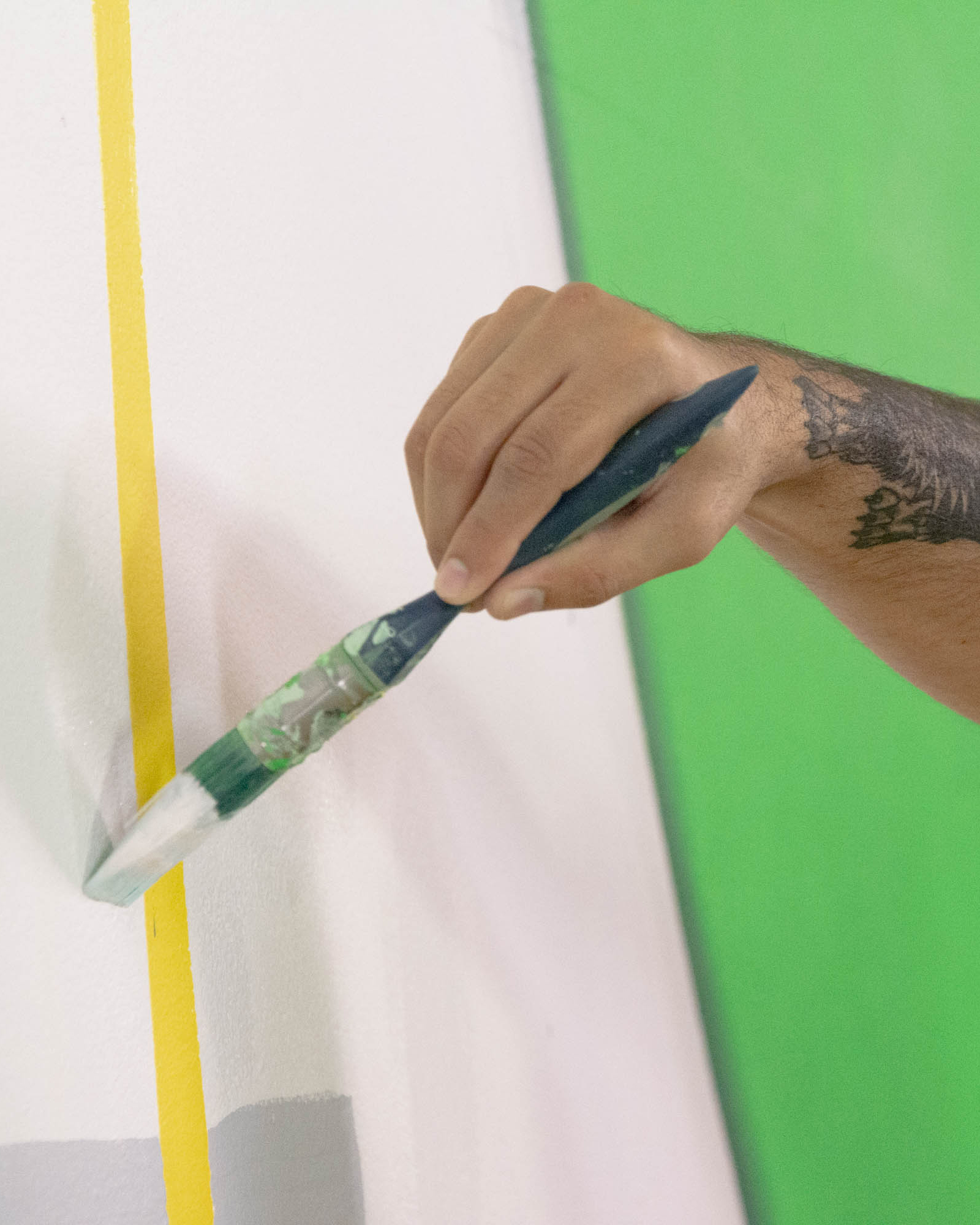
Tyrown Waigana Overgrown 2021 (detail). Acrylic paint, 500 x 680 cm. Purchased through the Art Gallery of Western Australia Foundation 2021, with support from The Next Collective and Minderoo Foundation. Photo by Tim Palman.
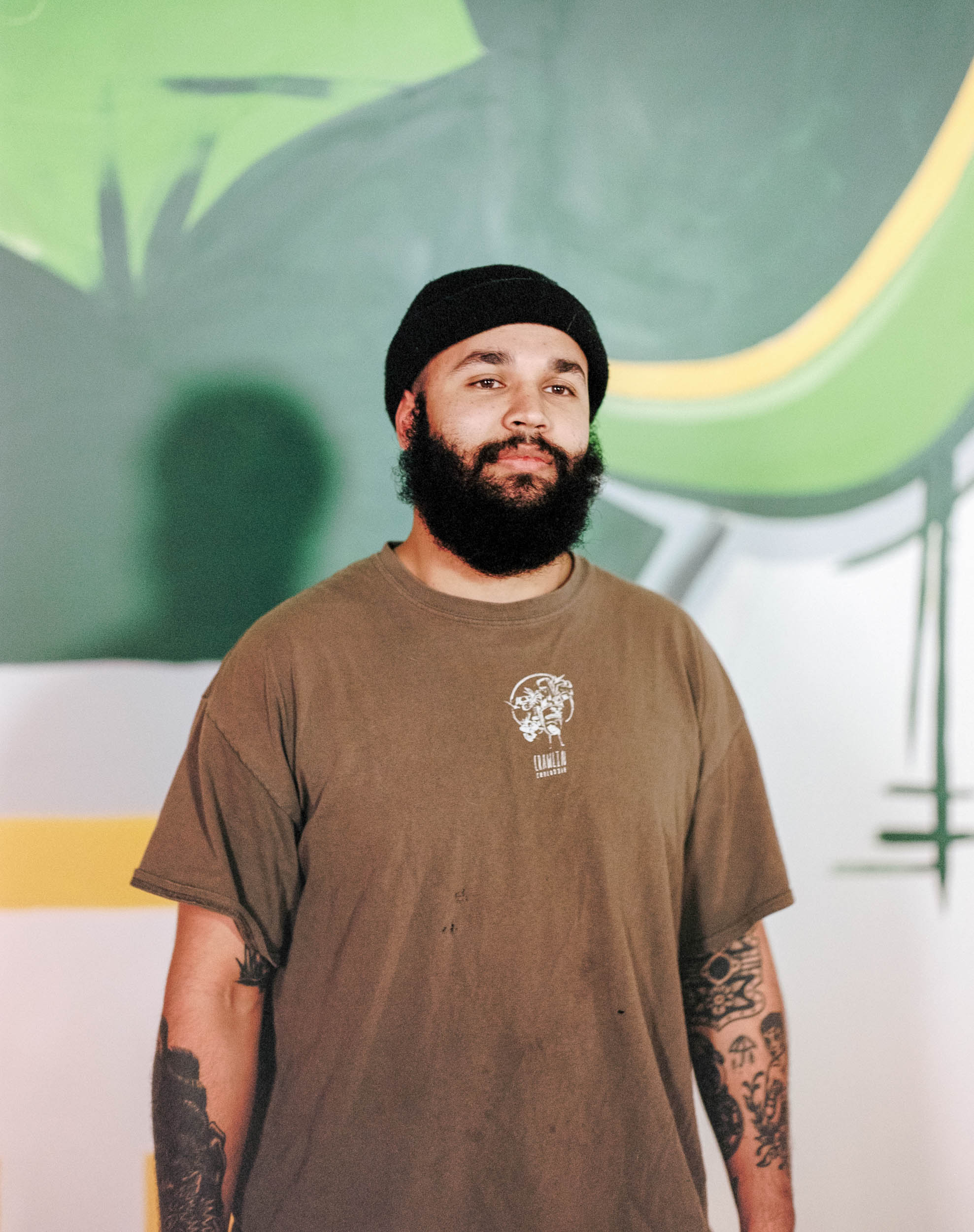
Tyrown Waigana. Photo by Tim Palman.
Talking more about his artistic family, Waigana says his nana and mum both “painted and decorated didgeridoos” and his nana’s younger brother was a painter too. “My pop Paul, I used to watch him paint. He had this slow methodical technique that was soothing to me,” he shares.
Waigana’s own paintings are expressive, experimental, and spatially ambiguous—they appear as though they are from another world. His incongruous characters vie for existence at the precipice of figure and field. Often he paints these wayward figures in the vein of Jean-Michel Basquiat. It could be said that when he paints, Waigana is creating lifeworlds for his characters, the canvas becoming their cosmos.
The artist’s warehouse-style studio is located in an industrial area in Bibra Lake. It is the kind of place where you can easily feel like you are in your own little universe. Waigana is an artist who has a strong sense of self-determination in his work. “I don’t like to do a lot of collaborations, and I don’t particularly thrive on other people trying to influence my work—especially when I already have a strong sense of what I want to do,” he says.
On the surface this might seem at odds with the familial influence and observational approach in his art-making but Waigana likes to have space to attend to his ideas, to let them come into their own being.
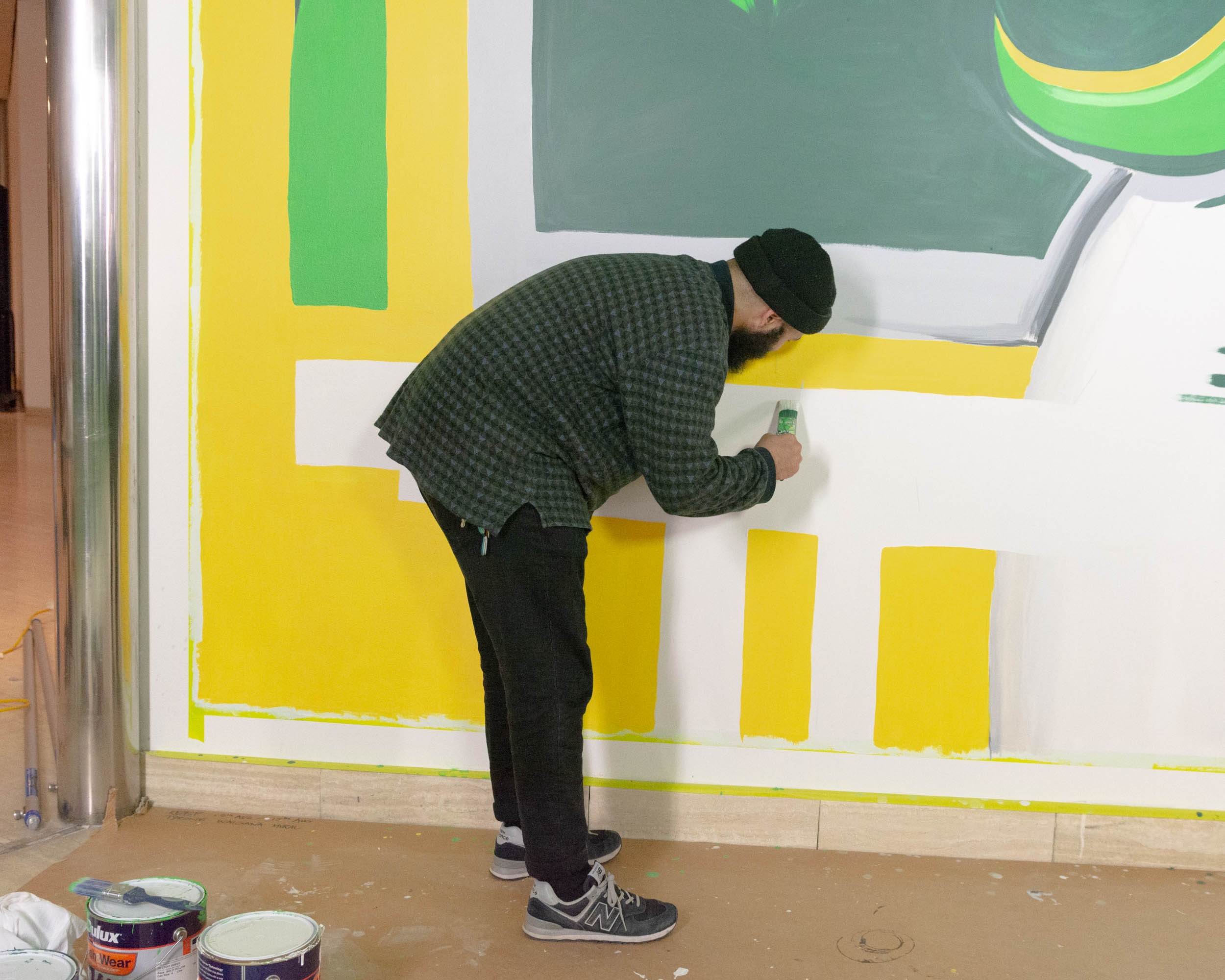
Tyrown Waigana Overgrown 2021 (detail). Acrylic paint, 500 x 680 cm. Purchased through the Art Gallery of Western Australia Foundation 2021, with support from The Next Collective and Minderoo Foundation. Photo by Tim Palman.
Waigana grew up around the surrounding suburbs of Fremantle. He studied at Curtin University, taking classes in graphic design and illustration. “That is where I fostered some of my technical skills,” he says, which he applies in the design work he does under his company Crawlin Crocodile.
Last June, Waigana won the prestigious National NAIDOC poster competition with his entry Shape of Land (2020), which was fitting for that year’s NAIDOC theme “Always Was, Always Will Be”. Creating the NAIDOC poster is as much about making a design that embodies the year’s theme as it is about creating a historical document that can be looked back on like an eternal ode to all that Indigenous peoples have fought for and achieved up until that point.
Waigana’s mural for AGWA is another milestone in the artist’s career. “It’s the first mural and the largest artwork [in scale] that I’ve done,” he says. It’s also the first artwork of its kind in the gallery, with AGWA’s new foyer-located ephemeral mural wall set to showcase different artists every few months. When applying for the commission, Waigana says his first thought was: “I’ll just do something wild and see if it flies.” Evidently, it did.
Keeping his cards close to his chest before the grand unveiling, Waigana teases: “The mural is really expressive. One thing I really like to do is blur the line between form and figure, where you don’t really know where things start and end.”
In a sense the mural itself will blur lines, shifting our perceptions of where architecture ends and art begins, with the gallery’s structure becoming the artwork, the characters, their cosmos.
This article was first published in the print publication The View From Here in October 2021 under the title Blurring Lines.
